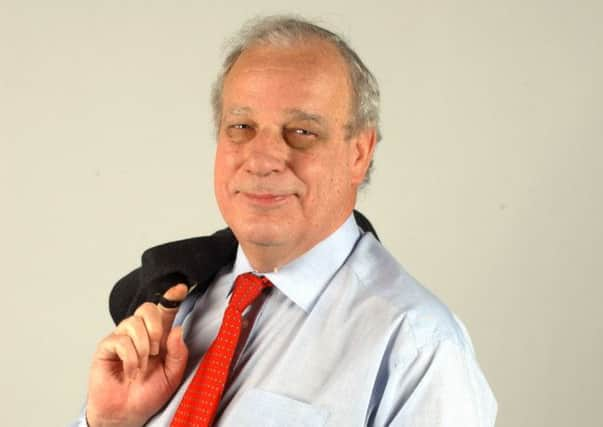Comment: Getting decisions off PAT on investments


The secret of investment happiness, surely, is capital uplift plus re-invested dividends. And, if you had been re-investing the dividends, the total return version of the FTSE 100 broke through its previous peak as early as 2006.
As for bond market investors, the party punch bowl has long acquired supernatural properties of replenishment. Magic elves keep filling it up every time experts warn that bonds cannot keep rising for ever. So the party continues as yields fall to record lows.
Advertisement
Hide AdAdvertisement
Hide AdIt is rare indeed when both equities and bonds have simultaneously delivered record gains for investors. I had thought this combination of stock market ebullience and bond euphoria would have induced a state of comatose depression at that temple of contrarian thinking, Personal Assets Trust (PAT). The deeply defensive stance of this Edinburgh-based investment trust has long been seen as the epitome of Scottish prudence and scepticism. If its natural state is gloominess, how dark must the mood be now?
For many, PAT can sound like a stopped clock that’s right only twice a day – or an exotic lily that flowers only once a decade. But instead, the latest quarterly report finds director Robin Angus in a mood of spring-like cheer.
“The less encouraging that things become,” he writes, “and the less justified today’s high prices appear, the nearer we come to Personal Asset’s next leap forward.”
The latest report presses on two of the most awkward questions for investors today. With so many share prices looking expensive, where should we invest? And with bond yields continuing to fall towards zero (and worse), when will this QE-inflated bond bubble burst?
We are, suggests Angus, in a topsy-turvy world, one of negative nominal interest rates. Yields on central bank deposits are now negative in Switzerland and Denmark, the yield on ten-year German bunds is down to 0.35 per cent – below those in Japan – making a derisory 1.5 per cent yield on ten-year UK gilts seem absurdly generous by comparison. All this, he says, is symptomatic of a world awash with cash – but sadly short of growth.
As for equities, many now look expensive, particularly given the low level of earnings growth. Even among PAT’s biggest holdings such as Unilever and Philip Morris, earnings are expected to be little higher than they were four years ago.
In response to all this, PAT has cut its equity weighting from an already cautious 44.5 per cent in January to 40.8 per cent today. The percentage of assets held in cash or near cash now stands at a remarkable 22.4 per cent – enough to invite accusations that this is fast becoming a deposit account with a few equities tacked on.
And the world of diminishing yields has brought problems for PAT itself: a revenue shortfall relative to the sum required to maintain the dividend. Constant earnings per share of £4.21 and a maintained dividend of £5.60 would exhaust revenue reserves in 2016 and in 2017 necessitate a transfer of £1.39 per share from capital.
Advertisement
Hide AdAdvertisement
Hide AdAlready I can hear the sounds of guns being loaded and a lynch mob gathering in nearby Charlotte Square. Borrowing from capital reserves? First step on the road to perdition!
However, the alternatives would be likely to bring out even larger crowds in the square for this mutinous “PAT Spring”: cutting the dividend (violating an unbroken record of maintained or increased dividends since 1990), or increasing the portfolio yield at the expense of quality and the commitment to capital preservation. Think of the riots.
So PAT will be asking shareholders to approve a special resolution empowering the board to draw on capital profits. It says this is a temporary measure, it will only borrow to maintain the present dividend and any surpluses in future years will be used to repay the amount distributed before a higher dividend is paid.
The comfort for now is that the trust has regained some form after the traumas of 2013, a 12 per cent rise over the past year outperforming the FTSE All Share Index.
As PAT tends to do well when markets are in trouble, followers will see this as a premonition.
SUBSCRIBE TO THE SCOTSMAN’S BUSINESS BRIEFING